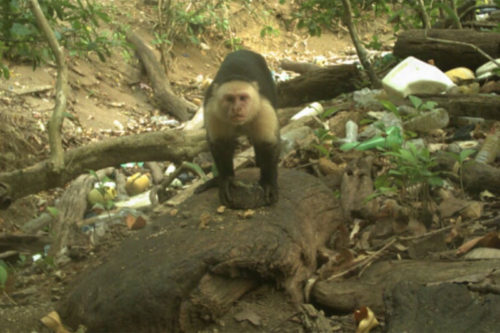Stone Age Monkeys
Genesis 1:24
“And God said, Let the earth bring forth the living creature after his kind, cattle, and creeping thing, and beast of the earth after his kind: and it was so. And it was so. “
 Douglas Adams, in his comic masterpiece The Hitchhikers’ Guide to the Galaxy, has one talk radio presenter enthusiastically stating, “We’ll be saying a big hello to all intelligent lifeforms everywhere and to everyone else out there, the secret is to bang the rocks together, guys.”
Douglas Adams, in his comic masterpiece The Hitchhikers’ Guide to the Galaxy, has one talk radio presenter enthusiastically stating, “We’ll be saying a big hello to all intelligent lifeforms everywhere and to everyone else out there, the secret is to bang the rocks together, guys.”
The joke is that the use of stone tools was supposedly one stage on the evolutionary progress of human beings. We remember movies from our youth – now criticized even by evolutionists – showing Neanderthal-type people who could only say “Ug!”, but who could make and use axe heads and arrow heads made of flint.
So when the New Scientist magazine opines in a heading that, “Some monkeys in Panama may have just stumbled into the Stone Age”, it makes us sit up and notice. It turns out that there are capuchins in Panama which open nuts and shellfish, using stones. Yet, other neighboring populations of the same species do not use such tools. The article is implying that these monkeys could be entering a stone age, which would, presumably, allow them to evolve into more intelligent forms. “Perhaps it takes a single hyper-intelligent individual to make the leap and begin using stone tools”, suggests the article’s author.
Yet, it is not only primates who use tools. Some sea otters use stones, while some crows can even manufacture simple tools from sticks or even wire. But at no time do these animals evolve into something new. God has created abilities to adapt and develop, but this is not evolution. Author: Paul F. Taylor
Prayer: We love to see the diversity of Your creation, O Lord, teaching us once again how great You are. Amen.
Ref: Some monkeys in Panama may have just stumbled into the Stone Age, < https://www.newscientist.com/article/2173021-some-monkeys-in-panama-may-have-just-stumbled-into-the-stone-age/ >, accessed 6/30/2018. Image: New Scientist, Open Source picture, CC-BY-NC-ND 4.0.